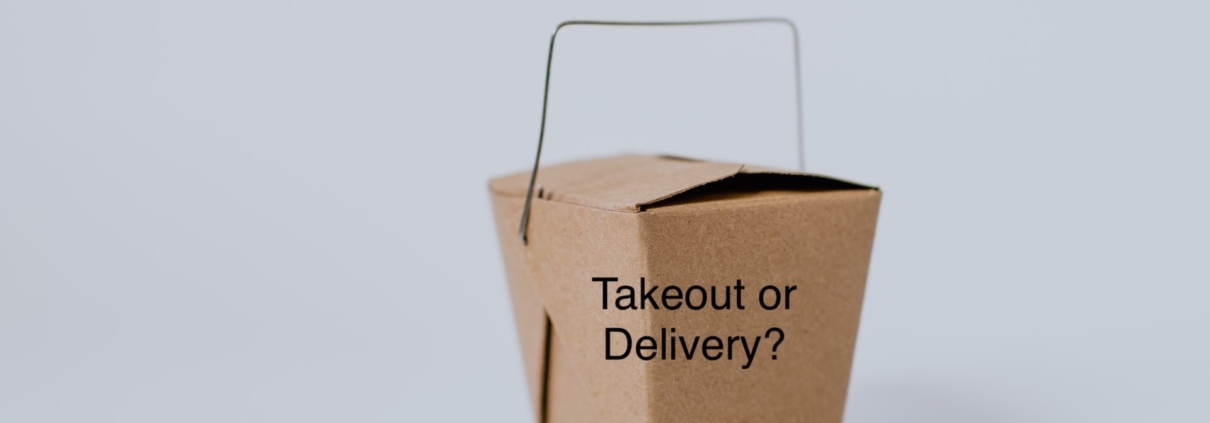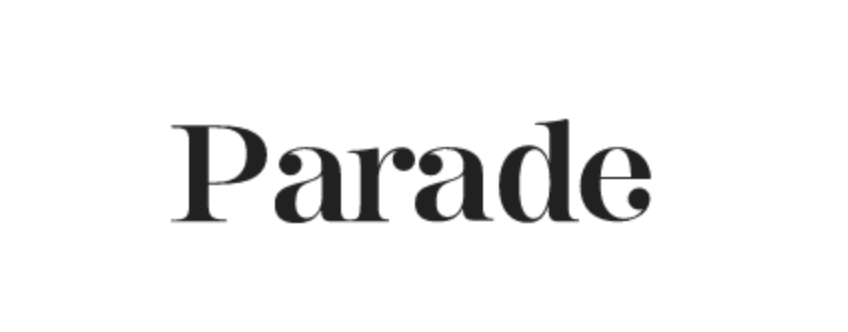Take-Out or Delivery of Food during Coronavirus: Is one safer than the other? Four recommendations to keep you safe.
The Coronavirus pandemic has turned our world upside down.
Schools are closed. Travel has come to an abrupt halt. Many employees are working remotely.
Our conversations are peppered with new terms like social distancing and flattening the curve.
According to the Center for Disease Control (CDC), it is socially irresponsible to eat in a restaurant. Luckily for us and the restaurants, they are sanctioning delivery and takeout since there is currently no evidence the virus can be transmitted via food.
But is take-out and delivery from your local restaurant risk-free?
Here are my top four recommendations to lower risks and flatten the curve while mindfully practicing social distancing… (amazing how I incorporated all of that in one sentence.)
Let’s start with takeout:
Recommendation #1: Always order from a place you trust, a place in which you have eaten and have used their bathroom.
- While the bathroom piece may sound strange, it is a logical metric. After all, if the bathroom isn’t clean, can you imagine what is going on in the kitchen?
- Ordering takeout from a new restaurant without accessing the bathroom? Check the local health report before placing your order. If the report was good prior to the pre-coronavirusoutbreak, you can probably trust them.
Recommendation #2: Minimize human contact when picking up your order.
- Try not to go to the restaurant for pickup during the most crowded time of day and practice social distancing when in the restaurant.
- While you are picking up your order, assess the precautions taken by the staff. Gloves? Anyone sneezing or coughing? No precautions? Cancel your order.
- Packaged cutlery? Probably perfectly safe. If they offer you loose cutlery, either toss it and use your own or sanitize it the way you would sanitize your hands.
- To be extra cautious, wear disposable gloves to carry the order home and dispose of any of the takeout containers or any packaging materials along with the gloves.
Here’s my take (out) on delivery:
Recommendation #3: Schedule delivery directly from the restaurant itself if possible.
- If your favorite restaurants, which you know and trust, have in-house delivery options, consider ordering through them directly instead of going through third-party apps. The apps take a commission fee which cuts into the profits of the restaurant.
Why not support the restaurant directly during these tough times?
Recommendation #4: Avoid direct contact with the delivery person.
- Short of spraying down the delivery person with Lysol, there is no way to 100% protect yourself. But you do not need to take your order from the delivery person directly. Instead, you can ask the delivery person to place your order outside your door and avoid personal contact. Then dispose the packaging (using gloves if you prefer), the containers and disinfect the area where the delivery was placed.
Then follow proper hand hygiene before eating.
I was recently featured on Channel 10 and took questions from consumers about whether I am personally ordering take-out and having any food delivered.
The answer is yes. While my refrigerator and freezer are stocked with essentials, I have to be realistic. I have limited interest in cooking and I need something more substantial than a Greek yogurt or a protein bar for dinner.
Is take-out and delivery risky? Of course, it is. But so is crossing the street, driving a car or boarding a plane.
We take calculated risks every day.
Is one riskier than the other?
If you pick up your food, you can assess the measures the restaurant is taking to prevent contamination.
However, at the same time, you may be exposing yourself to the plague. It’s a toss-up.
The important takeaway message is to keep-up-to-date with the news, think logically, avoid going out unless necessary, practice social distancing and most importantly, wash your hands.
If we all took the rules seriously and vigilantly stayed at home or at least practiced social distancing, we could flatten the curve.
That could save lives and help turn our world right side up.




















